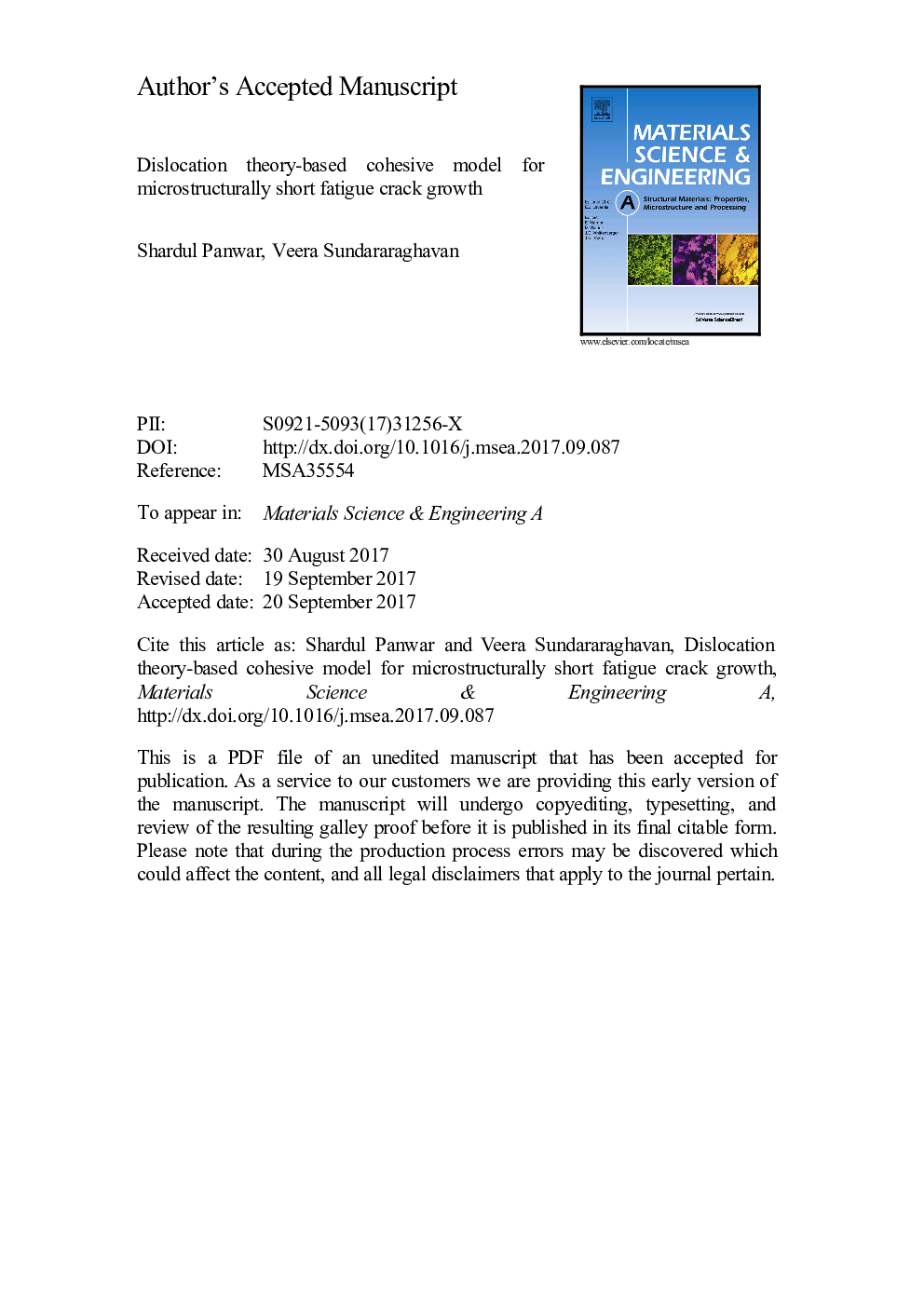| Article ID | Journal | Published Year | Pages | File Type |
|---|---|---|---|---|
| 5455134 | Materials Science and Engineering: A | 2017 | 33 Pages |
Abstract
A continuous representation of dislocations is used to represent a mode-II crack and the associated plastic zone. In the original formulation of dislocation theory, the friction stress that opposes the motion of the dislocations is represented by a constant stress. In our new formulation, we embed a cohesive zone in the plastic region in front of a crack tip by representing the friction stress as a function of the crack displacement. This allows cohesive zone models (obtainable from a lower scale simulation, such as molecular dynamics) to be integrated into a dislocation theory-based model, for the first time, to predict short crack growth. The details of this new formulation are shown for the two cases: the crack and the associated plastic zone inside a grain, and the crack and the associated plastic zone tip at the grain boundary. The main features of this new model are discussed along with an experimental comparison to the case of microstructurally short fatigue crack growth across two grains in a Ni-based CMSX-4 alloy.
Related Topics
Physical Sciences and Engineering
Materials Science
Materials Science (General)
Authors
Shardul Panwar, Veera Sundararaghavan,
